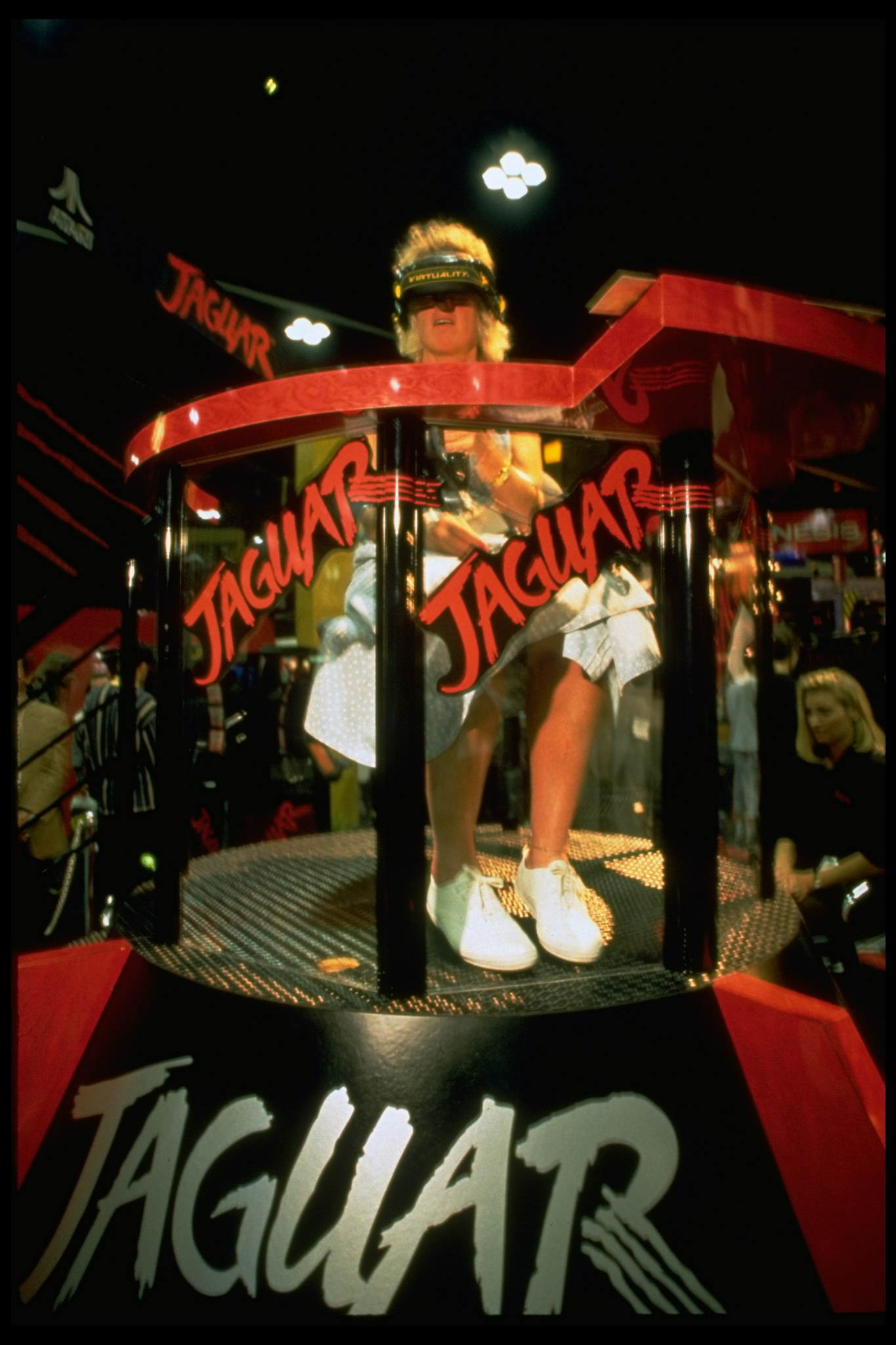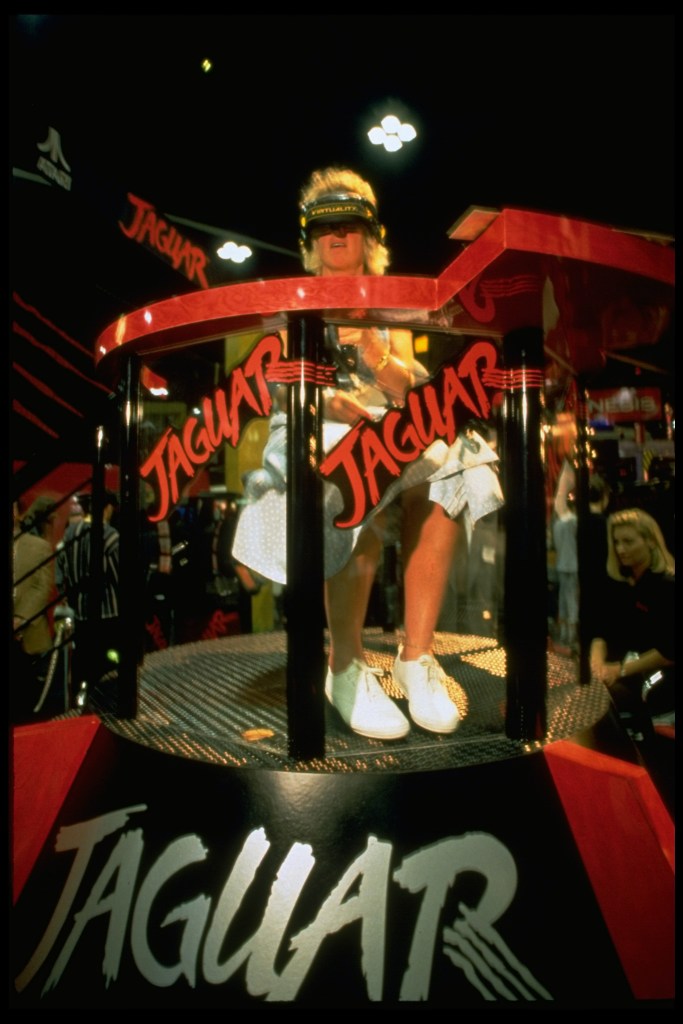Re-Exposure is an occasional Motherboard feature where we look back on delightful old tech photos from wire service archives.
The 1990s weren’t kind to Atari, and in a bid to be taken seriously again, it was willing to take some wild steps to get people to notice the Jaguar, the “64-bit” system with too many buttons and not enough games.
Videos by VICE
At the Consumer Electronics Show (CES) in 1994, for example, the company played up a forthcoming modem for online gameplay. (It never was released, of course—vaporware was prevalent at tradeshows during this era.)
But that was nothing compared to the Jaguar VR. Announced at the 1995 edition of CES and demoed to the public during the first edition of the Electronic Entertainment Expo (E3), the company boldly claimed the device would be the first VR headset targeted at home users. It wasn’t faux-VR of Nintendo’s Virtual Boy, it argued, and it would actually succeed at bringing the device to the home, unlike Sega.
The company actually had some bonafides in this department, teaming with Virtuality, a company that had successfully released some of the earliest VR efforts into the wild.
But Atari couldn’t catch a break with the press during the era, and its E3 booth suffered in the face of overwhelming competition from Nintendo, Sega, Sony, and 3DO. Still, look at this thing:

Atari’s Jaguar demo at E3 in 1995. Image: Marissa Roth/LIFE
The VR headset demos, featuring a 3D version of Missile Command, gave Atari a few bragging rights at E3, but it wasn’t enough. NEXT Generation, the legendary industry magazine, highlighted the skepticism in its E3 recap—and worse, suggested Atari was lying to people taking the demo.
“Although the steady flow of conference delegates who ‘had a go’ at an ‘early working demonstration’ of Jaguar VR came away exceedingly impressed, NEXT Generation has learned the system being demonstrated was nothing other than Virtuality’s own arcade system disguised as Jaguar VR,” the magazine wrote in an issue that also included a defensive interview with then-Atari head Sam Tramiel.
The problem was, of course, that the technology wasn’t ready—and wouldn’t be for a couple of decades, in the hands of other companies. Atari and Virtuality went back and forth trying to create something that one, cost $300, and two, didn’t suck. The partnership eventually broke apart, as did Atari itself, with only a couple of incredibly rare prototypes to show for all that effort.
But hey, they’ll always have those impressed folks at E3 1995.
More
From VICE
-

Photo: GK Hart/Vikki Hart / Getty Images -

Photo: ESA -

Screenshot: Jarrad Nolan / ATSB

